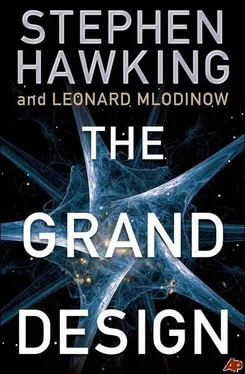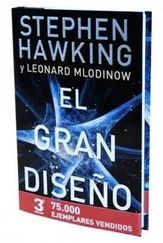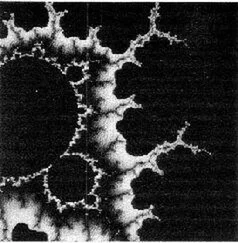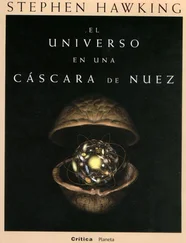This book is rooted in the concept of scientific determinism, which implies that the answer to question two is that there are no miracles, or exceptions to the laws of nature. We will, however, return to address in depth questions one and three, the issues of how the laws arose and whether they are the only possible laws. But first, in the next chapter, we will address the issue of what it is that the laws of nature describe. Most scientists would say they are the mathematical reflection of an external reality that exists independent of the observer who sees it. But as we ponder the manner in which we observe and form concepts about our surroundings, we bump into the question, do we really have reason to believe that an objective reality exists?


***

A FEW YEARS AGO the city council of Monza, Italy, barred pet owners from keeping goldfish in curved goldfish bowls. The measure’s sponsor explained the measure in part by saying that it is cruel to keep a fish in a bowl with curved sides because, gazing out, the fish would have a distorted view of reality. But how do we know we have the true, undistorted picture of reality? Might not we ourselves also be inside some big goldfish bowl and have our vision distorted by an enormous lens? The goldfish’s picture of reality is different from ours, but can we be sure it is less real?
The goldfish view is not the same as our own, but goldfish could still formulate scientific laws governing the motion of the objects they observe outside their bowl. For example, due to the distortion, a freely moving object that we would observe to move in a straight line would be observed by the goldfish to move along a curved path. Nevertheless, the goldfish could formulate scientific laws from their distorted frame of reference that would always hold true and that would enable them to make predictions about the future motion of objects outside the bowl. Their laws would be more complicated than the laws in our frame, but simplicity is a matter of taste. If a goldfish formulated such a theory, we would have to admit the goldfish’s view as a valid picture of reality.
A famous example of different pictures of reality is the model introduced around AD 150 by Ptolemy (ca. 85-ca. 165) to describe the motion of the celestial bodies. Ptolemy published his work in a thirteen-book treatise usually known under its Arabic title, Almagest. The Almagest begins by explaining reasons for thinking that the earth is spherical, motionless, positioned at the center of the universe, and negligibly small in comparison to the distance of the heavens. Despite Aristarchus’s heliocentric model, these beliefs had been held by most educated Greeks at least since the time of Aristotle, who believed for mystical reasons that the earth should be at the center of the universe. In Ptolemy’s model the earth stood still at the center and the planets and the stars moved around it in complicated orbits involving epicycles, like wheels on wheels.
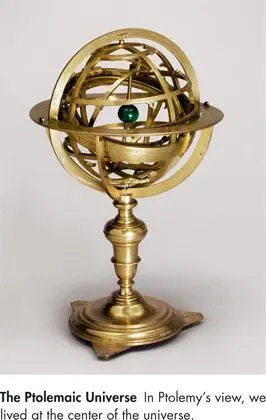
This model seemed natural because we don’t feel the earth under our feet moving (except in earthquakes or moments of passion). Later European learning was based on the Greek sources that had been passed down, so that the ideas of Aristotle and Ptolemy became the basis for much of Western thought. Ptolemy’s model of the cosmos was adopted by the Catholic Church and held as official doctrine for fourteen hundred years. It was not until 1543 that an alternative model was put forward by Copernicus in his book De revolutionibus orbium coelestium (On the Revolutions of the Celestial Spheres), published only in the year of his death (though he had worked on his theory for several decades).
Copernicus, like Aristarchus some seventeen centuries earlier, described a world in which the sun was at rest and the planets revolved around it in circular orbits. Though the idea wasn’t new, its revival was met with passionate resistance. The Copernican model was held to contradict the Bible, which was interpreted as saying that the planets moved around the earth, even though the Bible never clearly stated that. In fact, at the time the Bible was written people believed the earth was flat. The Copernican model led to a furious debate as to whether the earth was at rest, culminating in Galileo’s trial for heresy in 1633 for advocating the Copernican model, and for thinking “that one may hold and defend as probable an opinion after it has been declared and defined contrary to the Holy Scripture.” He was found guilty, confined to house arrest for the rest of his life, and forced to recant. He is said to have muttered under his breath “Eppur si muove,” “But still it moves.” In 1992 the Roman Catholic Church finally acknowledged that it had been wrong to condemn Galileo.
So which is real, the Ptolemaic or Copernican system? Although it is not uncommon for people to say that Copernicus proved Ptolemy wrong, that is not true. As in the case of our normal view versus that of the goldfish, one can use either picture as a model of the universe, for our observations of the heavens can be explained by assuming either the earth or the sun to be at rest. Despite its role in philosophical debates over the nature of our universe, the real advantage of the Copernican system is simply that the equations of motion are much simpler in the frame of reference in which the sun is at rest.
A different kind of alternative reality occurs in the science fiction film The Matrix, in which the human race is unknowingly living in a simulated virtual reality created by intelligent computers to keep them pacified and content while the computers suck their bioelectrical energy (whatever that is). Maybe this is not so far-fetched, because many people prefer to spend their time in the simulated reality of websites such as Second Life. How do we know we are not just characters in a computer-generated soap opera? If we lived in a synthetic imaginary world, events would not necessarily have any logic or consistency or obey any laws. The aliens in control might find it more interesting or amusing to see our reactions, for example, if the full moon split in half, or everyone in the world on a diet developed an uncontrollable craving for banana cream pie. But if the aliens did enforce consistent laws, there is no way we could tell there was another reality behind the simulated one. It would be easy to call the world the aliens live in the “real” one and the synthetic world a “false” one. But if-like us-the beings in the simulated world could not gaze into their universe from the outside, there would be no reason for them to doubt their own pictures of reality. This is a modern version of the idea that we are all figments of someone else’s dream.
These examples bring us to a conclusion that will be important in this book: There is no picture- or theory-independent concept of reality. Instead we will adopt a view that we will call model-dependent realism: the idea that a physical theory or world picture is a model (generally of a mathematical nature) and a set of rules that connect the elements of the model to observations. This provides a framework with which to interpret modern science.
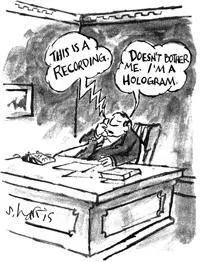
Philosophers from Plato onward have argued over the years about the nature of reality. Classical science is based on the belief that there exists a real external world whose properties are definite and independent of the observer who perceives them. According to classical science, certain objects exist and have physical properties, such as speed and mass, that have well-defined values. In this view our theories are attempts to describe those objects and their properties, and our measurements and perceptions correspond to them. Both observer and observed are parts of a world that has an objective existence, and any distinction between them has no meaningful significance. In other words, if you see a herd of zebras fighting for a spot in the parking garage, it is because there really is a herd of zebras fighting for a spot in the parking garage. All other observers who look will measure the same properties, and the herd will have those properties whether anyone observes them or not. In philosophy that belief is called realism.
Читать дальше
